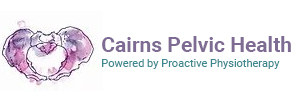If you or someone you know is experiencing headache or migraine it is likely the question ‘what triggers your headache (or migraine)?’ has been asked. This is because the medical model of headache recommends that if triggers can be identified, then avoidance will prevent episodes.
On the face of it, this advice makes sense; if all triggers could be avoided then no headaches should occur. However, clinicians and those with headache or migraine recognise that avoiding triggers is ‘easier said than done’. Firstly, it is not always easy to identify triggers, and rarely does an identifiable trigger always provoke headache. Secondly, some have many, wide-ranging triggers, and thirdly some simply cannot be avoided (e.g. menstruation); trying to avoid all triggers can in-itself be stressful and lead to a restricted lifestyle.
Furthermore, there is no scientific research to support that avoiding triggers leads to successful management. Avoiding triggers is not necessary. Why? Triggers do not ‘cause’ headache or migraine – there is a difference between a ‘trigger’ and a ‘cause’. A trigger starts something that is primed to happen, it acts on a pre existing state (cause) – were it not for the pre existing state, the trigger would not result in migraine or headache.
Migraine, by definition, is a unilateral headache. Stress, weather changes, lack of sleep, hormonal changes, dietary factors, dehydration, do not choose to affect one side of the head… they cannot be the cause of migraine. If these factors were the cause, why a one-sided headache?
Tension-type headache (TTH) is defined as headache on both sides, and is more likely to affect the whole head. Therefore, theoretically, and some might consider the triggers mentioned above as potential causes of TTH. However, the same triggers lead to migraine and TTH (and other forms of headache) suggesting they are acting on a common (with migraine) disorder which is most likely at the Brainstem level.7
Research has shown the underlying disorder in migraine and TTH is a sensitised Brainstem. The Brainstem is responsible for regulating and balancing incoming responses from the structures and systems inside the head, including blood vessels, visual (sensitivity to light), olfactory (smell – reaction to odours) and auditory (hearing – sensitivity to sound) systems.Under normal circumstances the Brainstem is able to balance this information, but when sensitised, normal incoming information from blood vessels for example, and systems is exaggerated and perceived as being much greater than normal (i.e. exaggeration of blood vessel expansion, sensitivity to light, odours, sound) The body’s response to this artificially magnified information (now interpreted to be abnormal) is to create (head) pain. Another way of interpreting this situation is to consider the Brainstem as an audio speaker… a sensitised brainstem is now an audio speaker in which the volume control is stuck on maximum!
Furthermore, neck symptoms (pain, discomfort, stiffness) precede and accompany migraine and TTH in 70-80% of patients and disorders of the upper neck can sensitise the Brainstem. Incriminating the neck further is the finding that neck pain and sitting at a computer for long periods are amongst the most common triggers for headache and migraine.
The Physios at Proactive Physiotherapy have undertaken a comprehensive, post graduate course in assessment and management of the upper cervical spine in headache conditions (Watson Headache® Approach – which has been shown to de-sensitise the Brainstem in those with migraine), and are now able to assist you with ruling in or out cervical disorders in sensitisation of the Brainstem. By disarming (or de sensitising) the Brainstem, triggers of headache and migraine do not need to be avoided.


